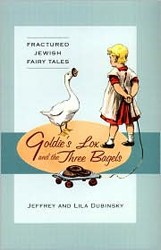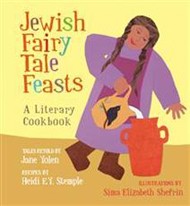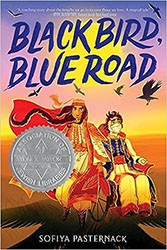Folklore is our shared heritage. The recurrence of motifs across different cultures — such as the trials of a poor girl seeking the prince who will transform her life — offers proof our common human concerns. Jane Yolen has never subscribed to the notion that artists should describe only those experiences exclusive to their own ethnic group or gender, and in How to Fracture a Fairy Tale, she continues to explore the intersection of fantasy, myth, and psychology — and in doing so, “rewrites and refines” tales that expose the dark and troubling sides of human nature.
The book is divided into two main sections: the fairy tales themselves, and additional explanations for each one’s genesis, along with related poems. In her introduction, Yolen explains that her process involves both destruction and reconfiguration as she creates new narratives from the possibilities suggested by old ones.
Yolen has set a few of the tales in settings specific to her own Jewish background, but interweaves elements from other traditions, as she does throughout the collection. In “Granny Rumple,” Yolen takes a hammer to the frightening but satisfying story of Rumpelstiltskin, best known in the German iteration recorded by the Grimm brothers (although it appears in other cultures as well). In the traditional tale, a powerful imp is ultimately frustrated in his attempt to rob the miller’s daughter of her child. Yolen interprets this story through a Jewish lens, transforming the small monster with fantastic power into a powerless Jewish moneylender who travels back and forth between the ghetto and the world of the gentiles. Yolen deliberately erases boundaries between author and story, confessing that her family were “notorious liars,” and that she herself had been deprived of learning Yiddish as a child. She punctuates her narrative with ironic commentary and contextualizes the historical antisemitism essential to her new myth.
In “Slipping Sideways Through Eternity,” the author revisits the time travel of her earlier novel, The Devil’s Arithmetic, as she consciously pushes the limits of how authors may choose to include Holocaust history within works of YA fiction. When Shanna, the fifteen-year-old protagonist, refers to her vision of Elijah as “somewhere between a concentration camp victim and a Beat poet,” readers may cringe and at the same time admire Yolen for allowing her character to be an authentically snide teenager. Shanna casually refers to the graphic novel Maus, and to historian Saul Friedländer’s discussion of the responsibilities inherent in interpreting the Holocaust. Yolen has fractured the fairy tale with allusions to her own role in taking on this weighty task.
In “Wrestling with Angels,” a reworking of the Genesis story, the narrator’s father defends himself from a creature that falling out of the sky and lands on him with tremendous force: “It [is] only then that he realized that he had hold of an angel.” Jane Yolen’s How to Fracture a Fairy Tale will land that way in the reader’s consciousness, bringing both jarring realizations and familiar connections with stories we have always known.
Emily Schneider writes about literature, feminism, and culture for Tablet, The Forward, The Horn Book, and other publications, and writes about children’s books on her blog. She has a Ph.D. in Romance Languages and Literatures.





